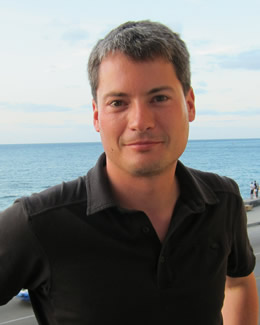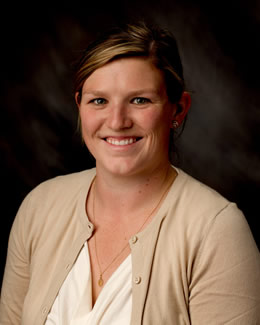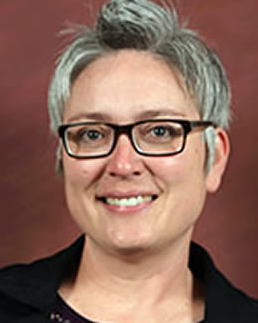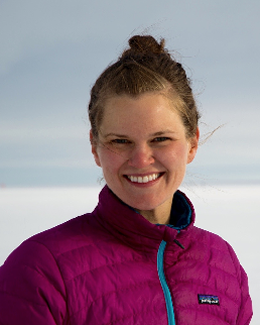News Article
December 6, 2016
Research Awards Build STEM Capacity
Building a scientific community in Utah means reaching a wide variety of citizens and students and giving them the opportunity to join in STEM-oriented research. Many of Utah’s students attend universities throughout the state where the capacity to conduct scientific research is somewhat limited. Professors at these institutions, also called primarily undergraduate institutions (PUls), often have the inclination, but lack time and resources to involve themselves and their students in current science research.
This is why iUTAH, an interdisciplinary research and training program aimed at strengthening science for Utah’s water future, has established a three-tiered approach to funding research awards. For the past four years, we have been working to extend our collaborative culture of multi-institutional research to PUIs across our state. By offering faculty at these institutions the opportunity to apply for traditional research awards, professional development grants, and release time awards, iUTAH is addressing, in a targeted, strategic way, the factors that most limit the participation of PUIs in research.
“As a former PUI faculty member myself, I understand the unique pressures and limitations that come with this environment,” says Andy Leidolf, Assistant Director of iUTAH. “It is tremendously rewarding to be able to provide needed support to leverage the ample talent and enthusiasm for research that exists at these institutions on behalf of our statewide research enterprise.”
In five years, iUTAH has funded over $300,000 towards this effort. This year, researchers at Utah Valley University (UVU), Westminster College, and Weber State University (WSU), will receive over $50,000, up to $20,000 per project, in funding as part of the 2017 iUTAH Research Catalyst Grant (RCG) initiative. Professors McKenzie Skiles, UVU, Frank Black, Westminster College, and Bridget Hilbig, WSU, have each received award funding to work with undergraduates, other faculty members, and with other research institutions, community groups, and professional organizations across the state.
“Looking at our most recent group of PUI awardees teaming up with research faculty, their proposed research is truly cutting edge,” said University of Utah professor and State Program Director of EPSCoR Paul Brooks. “These proposals would be incredibly competitive at any national panel that I have sat on for the National Science Foundation or Department of Energy.”
The project by McKenzie Skiles will look at the constraining physical controls on snow hydrology along the Wasatch Front. It brings together collaborators from each of Utah’s research institutions, including Janice Brahney, Utah State University, Greg Carling, Brigham Young University, and Jim Steenburgh, University of Utah.
Frank Black’s project will expand his earlier work on the Great Salt Lake (GSL) to examine wildfire ash and GSL dust as sources of heavy metals to Utah’s aquatic ecosystems. Collaborators include Greg Carling, Brigham Young University and Evan Glenn, US Forest Service, Uinta-Wasatch-Cache National Forest.
The third RCG awardee, Bridget Hilbig, will focus her work on enhancing soil biological complexity to conserve water in urban agriculture, working with Steven Burian, University of Utah as a collaborator. By better understanding the factors affecting urban ecosystem water-use efficiency, she hopes to improve our ability to predict urban water cycles in Utah. Hilbig also received a professional development grant to attend a Council on Undergraduate Research (CUR) Institute. With this additional training, she aims to “develop an interdisciplinary, multi-institutional research group at WSU that includes undergraduate students learning from, and interacting directly with, graduate students, postdoctoral researchers, and faculty members at their own institution and beyond.”
Among the 15 previous RCG grantees, Jacqualine Grant, an assistant professor of biology and museum curator of the Garth and Jerri Frehner Museum of Natural History at Southern Utah University, is the first to receive a release time award. Grant’s previously funded project involving a demonstration green roof exhibit and associated outreach has reached over 1,800 faculty, undergraduates, and students K-12 since its installation in 2015. In discussing the project’s accomplishments, she said “green infrastructure is an underutilized water-saving practice in southern Utah.” She will use the release time to develop several proposals with colleagues at the University of Utah and Northern Arizona University.
“By having researchers at the PUIs engaging with faculty at the more research-intensive universities, it opens science as a process up to all the PUI students in all those classes,” says Brooks. “And seeing that ability, the light bulb that goes off for those students, it’s not just memorization; it’s not just repeating the knowledge. They learn that they can contribute to something new.”
In addition to these opportunities, iUTAH continues to offer ongoing professional development to its participants through co-sponsoring events such as the Alda Center for Communicating Science held this fall, in partnership with the Offices of the Vice President for Research at Utah State University and the University of Utah. The next collaborative effort will be a Broader Impacts Workshop in March 2017 in partnership with the Vice President for Research office at the University of Utah.
For more how the RCG awards are working to strengthen iUTAH’s collaborative research network, visit the full article…




(lower left) Jacqualine Grant, SUU and McKenzie Skiles, UVU
« Back to list of all news articles


